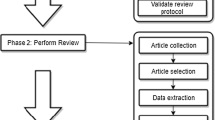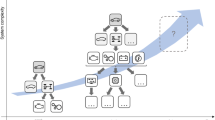Abstract
Conceptual schemas are the basis to build well-grounded Information Systems, by representing the main concepts of a domain of knowledge, as well as the relationships among them. Since conceptual schemas focus on the concepts, they are independent of the specific technological platform used to implement them. This allows a single conceptual schema to be transformed into different platform-specific models according to the implementation requirements. This is a non-trivial process that is crucial for the performance and maintainability of the system, as well as for the accomplishment of the domain data requirements. Much research has been done on transforming conceptual schemas into relational data models. Nevertheless, less work has been done on transforming conceptual schemas into property graphs, a data structure indispensable to building appropriate and efficient systems based on graph databases. The work proposes a systematic approach to transform conceptual schemas, represented as UML class diagrams, into property graphs by using a set of transformation rules and patterns applied in a systematic way. Besides a practical example used to help the presentation of the proposed approach, the evaluation has been done by measuring different quality dimensions such as semantic equivalence, readability, maintainability, complexity, size, and performance.
































Similar content being viewed by others
References
Abdelhedi F, Brahim AA, Atigui F, Zurfluh G (2017) UMLtoNoSQL: automatic transformation of conceptual schema to nosql databases. In: 2017 IEEE/ACS 14th international conference on computer systems and applications (AICCSA), pp 272–279. https://doi.org/10.1109/AICCSA.2017.76
Akid H, Frey G, Ayed MB, Lachiche N (2022) Performance of NoSQL graph implementations of star vs. snowflake schemas. IEEE Access 10:48,603-48,614. https://doi.org/10.1109/ACCESS.2022.3171256
Albdaiwi B, Noack R, Thalheim B (2014) Pattern-based conceptual data modelling. In: Thalheim B, Jaakkola H, Kiyok Y, Yoshida N (eds) Information modelling and knowledge bases XXVI, p 21
Almasri N, Korel B, Tahat L (2017) Toward automatically quantifying the impact of a change in systems. Softw Qual J 25(10):3833–3861. https://doi.org/10.1109/TSE.2021.3106589
Almasri N, Tahat L, Korel B (2022) Verification approach for refactoring transformation rules of state-based models. IEEE Transact Softw Eng 48(3):601–640. https://doi.org/10.1007/s11219-016-9316-8
Blaha M (2010) Patterns of data modeling. CRC Press Inc, Boca Raton
Burzynski P, Karagiannis D (2020) Bee-up—a teaching tool for fundamental conceptual modelling. In: Joint proceedings of Modellierung 2020 short, workshop and tools and demo papers
Castelltort A, Laurent A (2014) NoSQL graph-based OLAP analysis. In: Proceedings of the international conference on knowledge discovery and information retrieval, SCITEPRESS—science and and technology publications, pp 217–224. https://doi.org/10.5220/0005072902170224
Daniel G, Sunyé G, Cabot J (2016) UMLtoGraphDB: mapping conceptual schemas to graph databases. Springer, Heidelberg, pp 430–444. https://doi.org/10.1007/978-3-319-46397-1_33
De Virgilio R, Maccioni A, Torlone R (2014) Model-driven design of graph databases. Springer, Heidelberg, pp 172–185. https://doi.org/10.1007/978-3-319-12206-9_14
Ehrlinger L, Huszar G, Wöß W (2019) A schema readability metric for automated data quality measurement. DBKDA, p 12
El Alami A, Bahaj M (2018) The migration of a (conceptual object model com conceptual data model cdm, unified modeling language uml class diagram...) to the object relational database ordb. MAGNT Res Rep 2(4):318–32
Galvão J, Leon A, Costa C, Santos MY, Pastor O (2020) Towards designing conceptual data models for big data warehouses: the genomics case. In: Themistocleous M, Papadaki M, Kamal MM (eds) Information systems. Springer, New York, pp 3–19
Glaser PL, Ali SJ, Sallinger E, Bork D (2022) Model-based construction of enterprise architecture knowledge graphs. In: Almeida JPA, Karastoyanova D, Guizzardi G, Montali M, Maggi FM, Fonseca CM (eds) Enterprise design, operations, and computing, vol 13585, Springer International Publishing, New York, pp 57–73, doi: https://doi.org/10.1007/978-3-031-17604-3_4
Groger C, Schwarz H, Mitschang B (2014) The deep data warehouse: link-based integration and enrichment of warehouse data and unstructured content. In: 2014 IEEE 18th international enterprise distributed object computing conference. IEEE, pp 210–217. https://doi.org/10.1109/EDOC.2014.36
Gómez L, Kuijpers B, Vaisman A (2020) Online analytical processsing on graph data. Intell Data Anal 24(3):515–541. https://doi.org/10.3233/IDA-194576
Hevner M, Park R (2004) Design science in information systems research. MIS Q 28(1):75. https://doi.org/10.2307/25148625
Huang L, Duan Y, Sun X, Lin Z, Zhu C (2016) Enhancing uml class diagram abstraction with knowledge graph. In: Yin H, Gao Y, Li B, Zhang D, Yang M, Li Y, Klawonn F, Tallón-Ballesteros AJ (eds) Intelligent data engineering and automated learning—ideal 2016. Springer, pp 606–616
Jacobson L, Booch JRG (2021) The unified modeling language reference manual
Karagiannis D, Buchmann RA (2018) A proposal for deploying hybrid knowledge bases: the ADOxx-to-GraphDB interoperability case. In: Proceedings of the 51st Hawaii international conference on system sciences
Pastor O, Molina JC (2007) Model-driven architecture in practice: a software production environment based on conceptual modeling, vol 1. Springer, Heidelberg
Pastor O, España S, Panach JI, Aquino N (2008) Model-driven development. Inform Spektr 31(5):394–407
Peffers K, Tuunanen T, Rothenberger MA, Chatterjee S (2007) A design science research methodology for information systems research. J Manag Inf Syst 24(3):45–77. https://doi.org/10.2753/MIS0742-1222240302
Rahayu J, Chang E, Dillon T, Taniar D (2000) A methodology for transforming inheritance relationships in an object-oriented conceptual model to relational tables. Inf Softw Technol 42(8):571–592. https://doi.org/10.1016/S0950-5849(00)00103-8
Robinson I, Webber J, Eifrem E (2015) Graph databases: new opportunities for connected data. O’Reilly, Sebastopol
Santos MY, Costa C (2020) Big data: concepts. Warehousing and analytics. River Publishers, Gistrup
Sellami A, Nabli A, Gargouri F (2020) Transformation of data warehouse schema to NoSQL graph data base. In: Abraham A, Cherukuri AK, Melin P, Gandhi N (eds) Intelligent systems design and applications, vol 941. Springer, New York, pp 410–420
Smajevic M, Hacks S, Bork D (2021) Using knowledge graphs to detect enterprise architecture smells. In: Serral E, Stirna J, Ralyté J, Grabis J (eds) The practice of enterprise modeling, vol 432. Springer, New York, pp 48–63. https://doi.org/10.1007/978-3-030-91279-6_4
Sparks G (2001) Database modelling in UML. Method Tools 9(1):10–23
Ziemann P, Hölscher K, Gogolla M (2005) From UML models to graph transformation systems. Electron Notes Theor Comput Sci 127(4):17–33. https://doi.org/10.1016/j.entcs.2004.10.025
Author information
Authors and Affiliations
Corresponding author
Additional information
Accepted after 2 revisions by Christof Weinhardt.
Rights and permissions
Springer Nature or its licensor (e.g. a society or other partner) holds exclusive rights to this article under a publishing agreement with the author(s) or other rightsholder(s); author self-archiving of the accepted manuscript version of this article is solely governed by the terms of such publishing agreement and applicable law.
About this article
Cite this article
León, A., Santos, M.Y., García, A. et al. Model-to-Model Transformation. Bus Inf Syst Eng 66, 85–110 (2024). https://doi.org/10.1007/s12599-023-00824-9
Received:
Accepted:
Published:
Issue Date:
DOI: https://doi.org/10.1007/s12599-023-00824-9




